Search
Summary 
Loading AI-generated summary based on World History Encyclopedia articles ...
Search Results

Definition
The Great Sphinx of Giza
The Great Sphinx of Giza is the most instantly recognizable statue associated with ancient Egypt and among the most famous in the world. The sculpture, of a recumbent lion with the head of an Egyptian king, was carved out of limestone on...
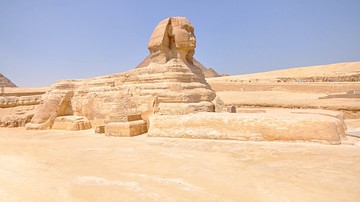
Image
The Great Sphinx of Giza
The Great Sphinx of Giza's construction date is subject to ongoing scholarly debate; the huge monument standing in line with Khafre's pyramid is still a mystery.
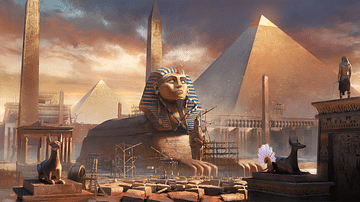
Article
The Mystery of the Great Sphinx
Buried for most of its life in the desert sand, an air of mystery has always surrounded the Great Sphinx, causing speculation about its age and purpose, method of construction, concealed chambers, role in prophecy, and relationship to the...
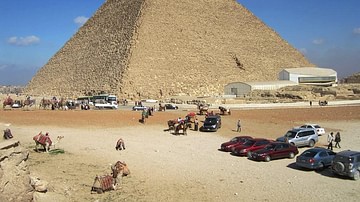
Definition
Great Pyramid of Giza
The Great Pyramid of Giza is a defining symbol of Egypt and the last of the ancient Seven Wonders of the World. It is located on the Giza plateau near the modern city of Cairo and was built over a twenty-year period during the reign of the...
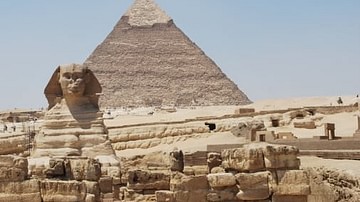
Definition
Giza
Giza is a plateau southwest of modern Cairo which served as the necropolis for the royalty of the Old Kingdom of Egypt. Most famous for the pyramids of Khufu (completed c. 2560 BCE) Khafre (c. 2530 BCE) and Menkaure (c. 2510 BCE) and the...
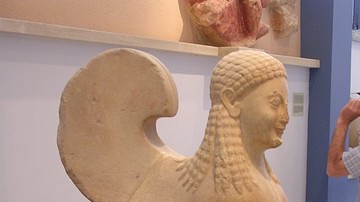
Definition
Sphinx
A sphinx is a mythical creature with the body of a lion, most often with a human head and sometimes with wings. The creature was an Egyptian invention and had a male head - human or animal; however, in Greek mythology, the creature had the...
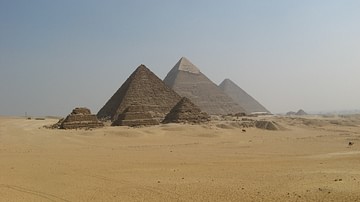
Definition
Old Kingdom of Egypt
The Old Kingdom of Egypt (c. 2613-2181 BCE) is also known as the 'Age of the Pyramids' or 'Age of the Pyramid Builders' as it includes the great 4th Dynasty when King Sneferu perfected the art of pyramid building and the pyramids of Giza...

Image
Great Sphinx & Great Pyramid of Giza (Artist's Impression)
An artist's recreation of the Great Sphinx and Great Pyramid of Giza as they probably appeared around the time they were built during the 4th Dynasty of Egypt (c. 2613-2498 BCE). From the game Old World.
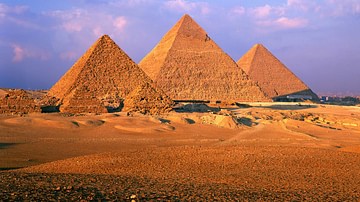
Definition
Ancient Egyptian Architecture
Ancient Egyptian architecture is often associated closely with the pyramids of Giza but was actually quite diverse, taking a number of forms in the construction of administrative buildings, temples, tombs, palaces, and the private homes of...

Image
Great Sphinx, Giza
The Great Sphinx of Giza measures 240 feet long (73 m) and stands 66 feet high (20 m), oriented on a straight west-to-east axis, Giza, Egypt.